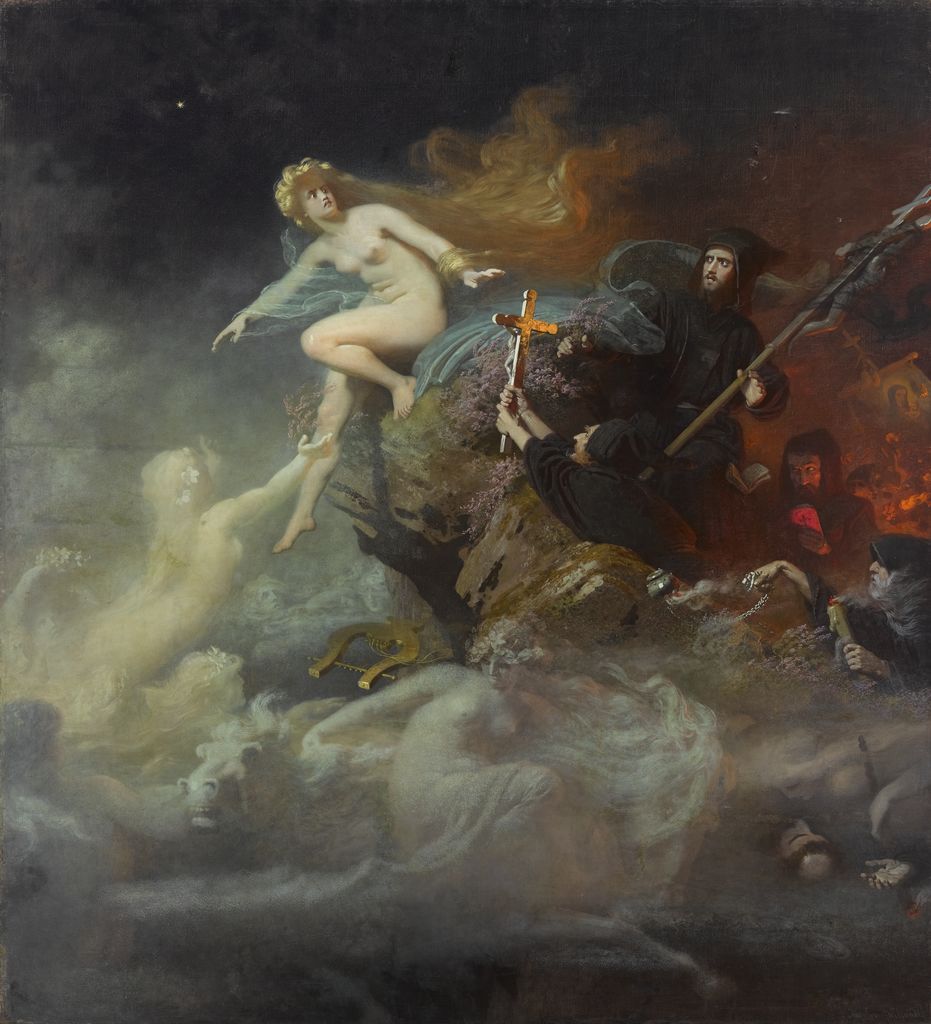Editor’s note
This spring, Silverwhite – Lennart Meri’s visionary prose meditation on migration, mythology, and the northern mind – was published in English by Hurst Publishers, in a luminous translation by Adam Cullen.
While Meri was charting Estonia’s mythic coordinates through poetic essays, Rein Sepp was pursuing a parallel quest: bringing the Poetic Edda into Estonian not just as philology, but as revelation. A solitary translator-poet with a near-mystical presence, Sepp gave shape to a northern imaginary that resonated deeply with the cultural anxieties and aspirations of Soviet-era Estonia.
As we prepare to publish an interview with Adam Cullen and Daniele Monticelli about the challenges and meanings of translating Meri, we are proud to present Mart Kuldkepp’s captivating essay on Rein Sepp and the Nordic essence of the Estonian psyche.
Kristjan Haljak
Echoes of the North
A sense of historical and cultural – if not always political – kinship with the Nordic world has been a central part of Estonian national self-identification since the end of the 19th century. While significant for Estonian artistic and intellectual life in many ways, this affinity for the Nordic has also affected perceptions in the realm of myth and epic that are associated with the deep, primordial layers of Estonian identity.
To an extent, this openness to Nordic cultural influence reflects a sense of absence. Unlike other European nations, Estonians possess no ancient poems about gods and heroes written down and preserved from the Middle Ages. In the mid-19th century, Friedrich Reinhold Kreutzwald composed his Kalevipoeg, a folkloric epic poem that was subsequently instrumental for the Estonian national awakening. Yet many have felt that Kalevipoeg, for all its charm, is a kunsteepos – an artful pastiche rather than a primordial mythic saga that could truly encapsulate the spirit of the nation. In this way, a void has lingered, waiting to be filled by other stories that could speak to the spirit of the nation.
Fast forward to the late 1960s, with Estonia under Soviet rule and its people politically suppressed, yet culturally resilient and seeking alternative, non-state-sanctioned ways to express their national identity. Amid this grey reality, a spark of ancient fire appeared when, in 1970, the Poetic Edda – a 13th-century Norse anthology of mythological and epic poems – was published in Estonian translation as Vanem Edda. For the first time, Norse myths and legends spoke to Estonians in their own language, with Odin, Thor, and Viking-age heroes performing deeds of creation and having adventures in Estonian verse. The translation was the work of Rein Sepp, a then 49-year-old poet and philologist.
Before the 1960s, translations from Old Norse to Estonian had been notable for their absence. Some works retelling the stories of Norse gods, seemingly primarily for teenage boys, had appeared before World War II. Yet their impact had been limited, and the retellings carried little of the original Norse flavour. It was in Rein Sepp’s rendering that Norse-Icelandic poetry became a cultural phenomenon – a breath of fresh air for the younger generation of Estonian intellectuals.
Rein Sepp (1921–1995) lived a life that mirrored the tumultuous currents of 20th-century Estonian history. Born in Tartu, in independent Estonia, he studied Germanic philology at the University of Tartu during the first Soviet era and then the Nazi German occupation in 1940-42, before being conscripted into the German army first as a clerk and later as a military correspondent. After the new Soviet takeover of Estonia in 1944, Sepp initially became a “forest brother” hiding in the woods from the authorities with two other Estonian poets, Artur Alliksaar and Ottniel Jürissaar. Later, he worked for a collective farm in Harjumaa but was arrested in 1949 and spent seven years as a political prisoner in Tallinn, Leningrad and Vorkuta.
After his release in 1956, Sepp re-established himself as a cultural figure and now turned his focus to translation. He consciously undertook the ambitious task of bringing major works of medieval European literature – especially Old Norse and other Germanic texts – into Estonian. He started with the most important one for him: the Poetic Edda. Several of its poems were published in his translation in 1962 as part of the Anthology of Medieval and Early Renaissance Literature. In 1970, Sepp’s complete translation of the Poetic Edda (Vanem Edda) appeared, remaining the most influential and widely read Old Norse literary work in Estonian to this day.
With the honorarium from his Poetic Edda translation, Sepp purchased a farmhouse in 1971, near the Latvian-Estonian border in the remote village of Ipiķi, where he settled. Withdrawn from urban life, he lived alone and simply, which he built and decorated according to his understanding of the ancient Norse worldview. At the same time, he cultivated a near-mythic reputation amongst the younger generation of Estonian intellectuals, especially in Tartu. His home became a place of pilgrimage for writers, scholars, and other seekers of cultural depth, who found in Sepp not just a translator but a spiritual guide to a world of ancient myth and national meaning.
Two main factors contributed to the special significance of Rein Sepp’s Edda translation. The first and foremost among these was the atmosphere of hopelessness in the Soviet 1970s and 1980s, when its economy, reliant on oil exports, struggled under the strain of the arms race with the United States. The consequences of stagnation were felt everywhere and manifested in renewed ideological oppression. In Estonia, these pessimistic sentiments were deepened by a generational shift in intellectual life, as younger intellectuals raised in Soviet Estonia began replacing those whose careers had begun during the independent Republic of Estonia before World War II. This created an impression that the personal continuity with the interwar era of independent Estonia was being broken. At the same time, migration from the rest of the USSR led to deepening concerns that Estonians might soon become a minority in their own land.
In response, many – especially younger intellectuals, writers, and cultural figures – developed an intense interest in strengthening the Estonian identity, and Estonia came to experience something of a new national awakening. Later, the same process led to the Singing Revolution of the late 1980s and culminated in the re-establishment of Estonian independence in 1991.
This new national movement was still grounded in cultural-nationalist ideals dating back to the first period of national awakening in the 19th century, emphasising language, folklore, folk culture, and history as defining elements of Estonian identity. Therefore, a significant part of this movement was dedicated to exploring the culture and folklore of Estonia’s ancient past, poorly documented as it was, unfortunately, in written sources. Speculation and mythmaking around distant Estonian history thus made a prominent appearance in those years, not least in the works of the later President of Estonia, Lennart Meri, which paralleled Rein Sepp’s interest in the forgotten past of the Baltic Sea region.
Lennart Meri’s Hõbevalge (1976) and its sequel Hõbevalgem (1984) presented an evocative reconstruction of Estonia’s ancient past, blending historical scholarship with literary imagination. Meri argued that prehistoric Estonia occupied a central position within Baltic and Northern European trade routes, which suggested that Estonians had had extensive maritime contacts not just with Scandinavia but also with Mediterranean civilisations long before historical records had formally acknowledged the existence of such connections. Drawing on archaeological findings, folklore, and linguistic evidence, Meri hypothesised about forms of cultural exchange and, in particular, the role of the mythical island Thule, associating it with the Estonian island of Saaremaa.
Sepp’s interest was more focused on exploring parallels and connections between Old Norse literature and ancient Estonian culture. Drawing from his poetic imagination, he found such parallels in abundance and presented them suggestively to the guests who visited him. In this sense, the published translation of the Poetic Edda (Vanem Edda) was only one aspect of Rein Sepp’s influence, albeit the most tangible. Equally important was the oral tradition surrounding the book, which never appeared in print and could only be experienced by seeing him in person. These lengthy visits by young Estonian intellectuals – often lasting several days and resembling pilgrimages – and the near-mystical experiences they encountered in Ipiķi have themselves become part of Estonian cultural memory.
The second reason why the Poetic Edda (Vanem Edda) sparked such particular interest had to do with the Nordic affinity characteristic of Estonian nationalism, expressed in the conviction that Estonia is an inherently a Nordic country, sharing the same deep identity with Finland, Sweden and others, with roots going back to the Viking Age and beyond. This idea resonated strongly with intellectuals’ fascination with Estonia’s ancient past, in which they sought evidence of early contacts and shared cultural traits with their northern neighbours.
In this connection, the question of the national epic came into sharp focus. A clue to Vanem Edda’s anticipated reception is given by the book itself, which was published in the same series – and in similar design – as several other recognised national epics, including the Estonian Kalevipoeg: hardbound, large-format, printed on thick paper, and adorned with illustrations in a mythological-primordialist style. Folklorist Ülo Tedre pointed at the importance of this setting in his 1995 obituary for Rein Sepp: ‘Perhaps epics seem especially important to us because we don’t really have our own folk epic. Say what you will, one must admit that F. R. Kreutzwald’s Kalevipoeg is [only] a so-called national epic.’
It is no exaggeration to say that for Sepp and his followers, Vanem Edda became an alternative: a text to which one might attribute the very qualities Kalevipoeg was felt to lack: true primordiality and authenticity. Believing in the existence of ancient cultural contacts between Estonia and Scandinavia, Vanem Edda could plausibly be read as offering glimpses into a Nordic prehistory of Estonia itself. For this reason, this very first work translated from Old Norse into Estonian was the one that left the most lasting impression. Thanks to Rein Sepp’s legacy, subsequent translators have been able to continue their work within a cultural environment where the high cultural status of Old Norse literature had already been firmly established.
In the end, Rein Sepp’s role as a mediator of ancient knowledge is just one example of how the stories Estonians tell about themselves – whether borrowed, adapted, or newly imagined – have reflected a need to anchor identity in the long flow of history. More than any remnants preserved or echoes translated, this quest to seek connections with the real and mythical past has formed the essence of Estonian national identity.
Written by Mart Kuldkepp. Edited by Robyn Laider.
ABOUT THE AUTHOR

Mart Kuldkepp (b. 1983) is an Estonian historian and Professor of Estonian and Nordic History at University College London. His research focuses on twentieth-century cultural and political relations between Estonia and the Nordic countries, questions of Nordic identity, and the reception of Old Norse literature. He has held visiting appointments at the University of Tartu and Yale University, and in 2015 received the Emerging Scholar Award from the Association for the Advancement of Baltic Studies. His most recent book, The Shortest History of Scandinavia (Black Inc., 2024), offers a concise and engaging account of the Nordic region’s past, from the Viking Age to the twenty-first century.
